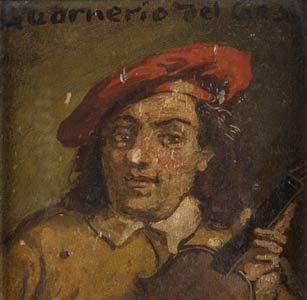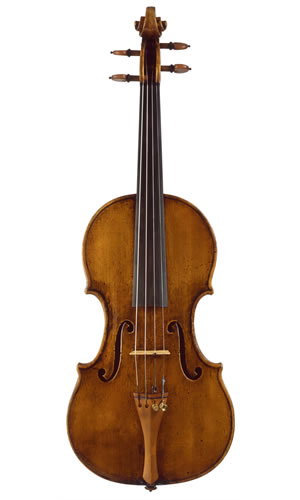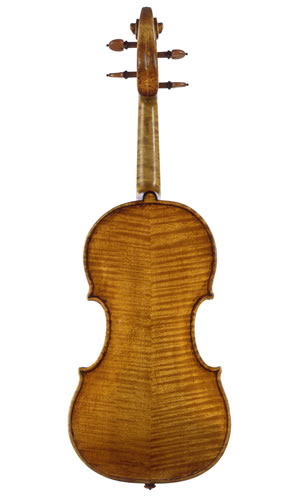
 Giuseppe Guarneri del Gesù was born in Cremona 21st August 1698, the last violin maker of the ‘Casa Guarneri’, a family of makers that spanned three generations. Del Gesu produced about 150 violins considered to be the finest sounding in the world, comparable only with the work of his contemporary, Antonio Stradivari.
Giuseppe Guarneri del Gesù was born in Cremona 21st August 1698, the last violin maker of the ‘Casa Guarneri’, a family of makers that spanned three generations. Del Gesu produced about 150 violins considered to be the finest sounding in the world, comparable only with the work of his contemporary, Antonio Stradivari.
Del Gesu began training with his father and famous violin maker, Giuseppe Giovanni Guarneri also known as ‘Filius Andreae’. At an early age he showed a precocious talent for assimilating the best qualities of other makers work and unlike his father, very soon took on board the developments taking place around the corner in Stradivari’s workshop. This may explain improvements to the sound quality of his father’s later violins, built in collaboration with the young del Gesu.
In 1722, aged 24, del Gesù left his father's house and married Cattarina Rota, a native of Vienna. Curiously, over the next several years or so he seemed to have turned his attention away from violin making and perhaps this absence was the origin of rumours suggesting he served a stretch in jail. By the mid-1720’s he had certainly returned to violin making and now as an independent man, embarked upon a remarkable twenty-year period of creativity producing some of the most exceptional sounding and visually enigmatic violins ever made, considered in their own right to be masterpieces of Italian art.
In about 1731, del Gesù adopted an interior label with the ‘IHS’ cipher added to the margin that later gave rise to his name 'del Gesu'. The reason for using this cipher is a matter for speculation but it may signify a connection with the Jesuits. By the early 1730's, his own unique style was fast developing and violins made from this point on would differ significantly in appearance and tonal character from that of his father or indeed the instruments of Stradivari. The violins, he now covered with an unsurpassable varnish of varying tint, combine the best characteristics of violins made over a century earlier in the town of Brescia to the north, with the fundamental qualities of Cremonese violins. Brescian makers such as Maggini (also a victim of the plague), and before him Gasparo da Salo created instruments known for their power and ability to withstand strong pressure from the bow. What del Gesu achieved was to marry the dark, ravishing tonal beauty of Brescian violins with the ease of string response of a Stradivari, and with monumental success.
By the late 1730's, the erratic nature of his genius was beginning to show itself. He continued with the principals developed in the earlier years but with fewer inhibitions, using knife and gouge with increasing freedom. This trend grew with the most magnificent effect over the next few years. The last two or three years of his life offer some of the most glorious and outrageous violins ever seen, yet that same, spellbinding tone is ever present. Even the most eccentric and extreme examples retain astounding tonal quality, an artistry that died apparently forever in 1744.

